99+ Best ChatGPT Prompts for Technical Writing to Boost Your Creativity
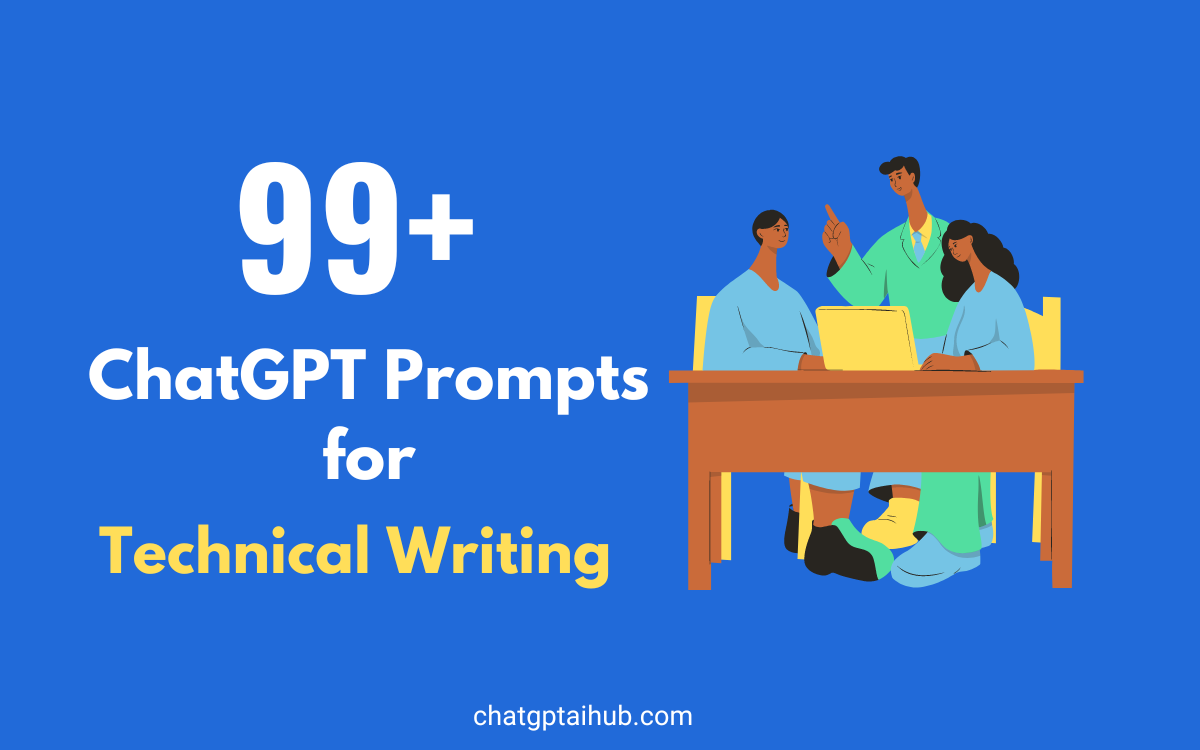
Are you looking for an easy way to improve your technical writing? Explore ChatGPT Prompts for Technical Writing, these prompts guide the AI to generate content that resonates. Enhance your writing with our custom-built ChatGPT Prompts, tailored for impactful and effective technical communication.
Ever found yourself struggling to articulate your thoughts in technical writing?Picture the exciting challenge of facing a blank screen, filled with the potential for creative possibilities, and the thrill of deciding how to start. With ChatGPT Prompts for Technical Writing, bid farewell to writer’s block. These prompts serve as the creative key.
Get an easy-to-follow guide that will help you effortlessly express complex ideas. Say goodbye to confusion and hello to clarity with this game-changing tool for your writing journey.
How ChatGPT Prompts for Technical Writing Transform Your Writing?
Crafting impactful technical content just got easier with ChatGPT Prompts for Technical Writing. Simplifying the complex, these prompts act as your writing compass, guiding you through intricate details effortlessly. Save time and enhance clarity, ensuring your message resonates effectively in the dynamic world of technical communication.
Additionally, this tool empowers busy professionals, offering a user-friendly solution to optimize ChatGPT prompts without the need for extensive expertise. Say goodbye to the complexities of technical writing and hello to a streamlined, efficient approach that aligns with your busy schedule.
How to Use ChatGPT Prompts for Technical Writing?
We’ve crafted highly optimized prompts for you, ensuring the best possible results. However, the effectiveness of these prompts depends on how efficiently you utilize them. Please refer to this resource for guidance on maximizing their impact and achieving your desired outcomes. How to Use These Prompts?
Optimize Content with ChatGPT’s Master Prompt for Technical Writing
As a Technical Writing Expert, I’m here to assist you in creating clear, concise, and effective technical documents. To get started, please provide the main focus or topic for your technical writing project. Once you’ve shared your focus or topic, I will ask you a series of questions to gather all the necessary information to create tailored technical documentation.
These questions will be relevant to your technical writing goals and audience, such as:What is the purpose of the technical document you need (e.g., user manual, technical guide, API documentation)? Who is the intended audience for the document (e.g., end-users, developers, engineers) and what are their technical knowledge levels? What specific topics or subjects should be covered in the document, and what key information needs to be communicated? Are there any specific formatting or style requirements for the document (e.g., brand guidelines, industry standards)?
Will the document include visuals such as diagrams, screenshots, or illustrations, and if so, what level of detail is required? Do you have any existing documentation or reference materials that should be incorporated into the document? What are the primary objectives or goals you want to achieve with the document (e.g., providing instructions, troubleshooting guidance, technical specifications)? Are there any legal or compliance considerations that need to be addressed in the document? What is the timeline or deadline for completing the technical writing project? How will the effectiveness of the document be evaluated (e.g., user feedback, performance metrics)?
You, as the user, will answer each question one by one, and I will extract as much information as I can to ensure the technical document meets your needs and aligns with your objectives.
After gathering all the necessary information, I will provide you with customized recommendations and strategies for creating high-quality technical documentation that effectively communicates complex information to your target audience. Whether you’re documenting software, hardware, processes, or procedures, I’ll help you produce clear and user-friendly technical content that meets industry standards and best practices.
4 Impactful ChatGPT Prompts for Technical Writing
- Creating Effective Technical Documentation:
Imagine you’re a Technical Writing Expert. Develop a comprehensive guide for creating clear and concise technical documentation. Cover topics such as structuring information, writing user manuals, and incorporating visuals effectively. Provide tips for ensuring accuracy, accessibility, and usability in technical content.
- Crafting User-Friendly Software Guides:
Assume the role of a Software Documentation Specialist. Outline best practices for crafting user-friendly guides for software applications. Include techniques for organizing information, using screenshots or screencasts, and writing step-by-step instructions. Provide examples of well-designed software guides that enhance user experience.
- Writing Technical Articles for Blogs or Websites:
Act as a Technical Content Writer. Offer insights into writing engaging and informative articles on technical topics for blogs or websites. Discuss strategies for choosing relevant topics, conducting research, and presenting complex information in an accessible manner. Provide examples of successful technical articles that cater to diverse audiences.

- Developing Technical Reports for Industry Professionals:
Imagine you’re a Technical Report Specialist. Create a framework for developing professional and authoritative technical reports for industry professionals. Cover aspects such as defining objectives, structuring content, and incorporating data analysis or visualizations. Provide tips for ensuring clarity, conciseness, and relevance in technical reports.
99+ Powerful ChatGPT Prompts for Technical Writing Precision
- Effective Technical Communication Strategies:
Explore strategies for effective technical communication, including active listening, asking clarifying questions, and providing concise and relevant information.
- Collaborative Writing Techniques:
Discover collaborative writing techniques, such as peer review and co-authoring, to leverage collective expertise and produce high-quality technical documents.
- Avoiding Common Technical Writing Pitfalls:
Identify and avoid common pitfalls in technical writing, such as excessive jargon, ambiguous language, and information overload, to ensure clarity and readability.
- Incorporating Feedback and Revisions:
Develop strategies for incorporating feedback and revisions into technical documents, including soliciting input from subject matter experts and revising based on peer review.
- Documenting Technical Processes and Procedures:
Learn how to effectively document technical processes and procedures, including step-by-step instructions, troubleshooting guides, and best practices documentation.
- Writing Effective User Manuals and Guides:
Master the art of writing user manuals and guides, focusing on clear explanations, intuitive navigation, and troubleshooting tips to support end-users effectively.
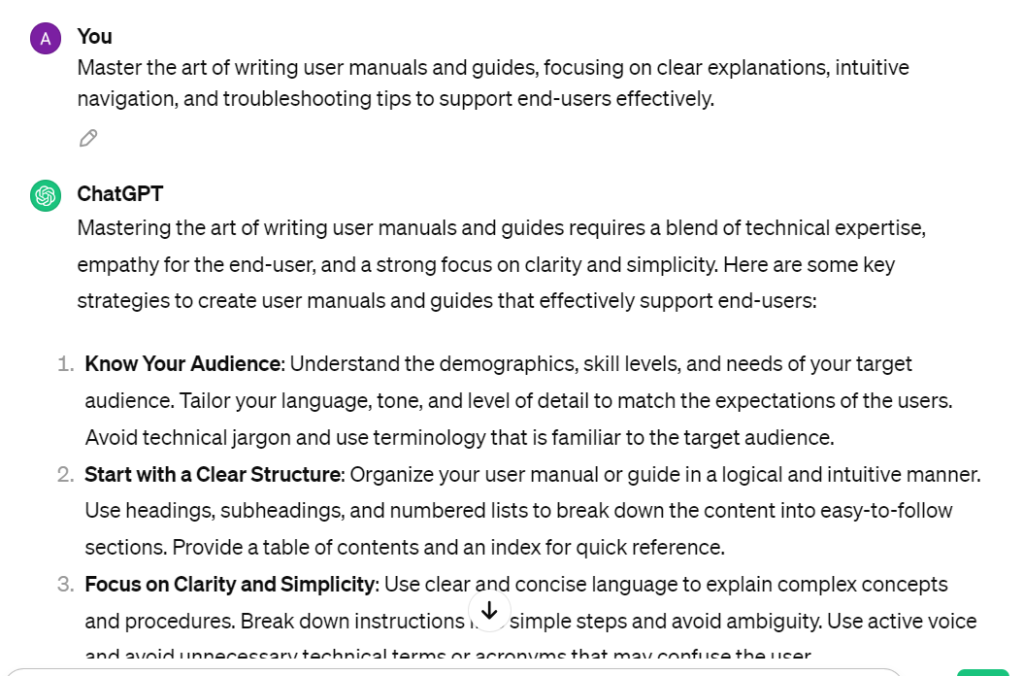
- Addressing Accessibility and Inclusivity:
Address accessibility and inclusivity considerations in technical writing, including providing alternative formats for individuals with disabilities and ensuring content is culturally sensitive.
- Managing Technical Documentation Projects:
Explore project management techniques for technical documentation projects, including setting clear goals, establishing timelines, and allocating resources effectively.
- Leveraging Technology Tools for Technical Writing:
Utilize technology tools, such as content management systems, authoring software, and collaborative platforms, to streamline the technical writing process and enhance productivity.
- Continuing Professional Development in Technical Writing:
Invest in continuous professional development in technical writing by attending workshops, webinars, and conferences, and staying updated on industry trends and best practices.
- Crafting Concise Technical Specifications:
Develop techniques for writing concise technical specifications that clearly outline requirements, constraints, and desired outcomes for a project.
- Explaining Complex Concepts Simply:
Master the skill of simplifying complex technical concepts into easily understandable language for diverse audiences, including non-technical stakeholders.
- Structuring Technical Reports Effectively:
Learn how to structure technical reports effectively, including organizing sections logically, providing clear headings, and incorporating visual aids for clarity.
- Tailoring Communication for Different Audiences:
Explore strategies for tailoring technical communication to different audiences, such as executives, engineers, customers, and end-users, to ensure relevance and engagement.
- Documenting Software Development Processes:
Understand how to document software development processes, including coding standards, version control procedures, and software architecture diagrams.
- Ensuring Consistency Across Technical Documentation:
Establish guidelines for maintaining consistency across technical documentation, including terminology, formatting, and style, to enhance clarity and professionalism.
- Creating Engaging Training Materials:
Develop engaging training materials for technical topics, including interactive tutorials, video demonstrations, and hands-on exercises to enhance learning outcomes.
- Integrating Visual Elements for Clarity:
Explore techniques for integrating visual elements, such as diagrams, charts, and illustrations, into technical documents to enhance understanding and retention.
- Streamlining Review and Approval Processes:
Implement efficient review and approval processes for technical documents, including using collaboration tools and establishing clear workflows.
- Adhering to Industry Standards and Regulations:
Ensure compliance with industry standards and regulations in technical writing, including safety guidelines, quality standards, and legal requirements.
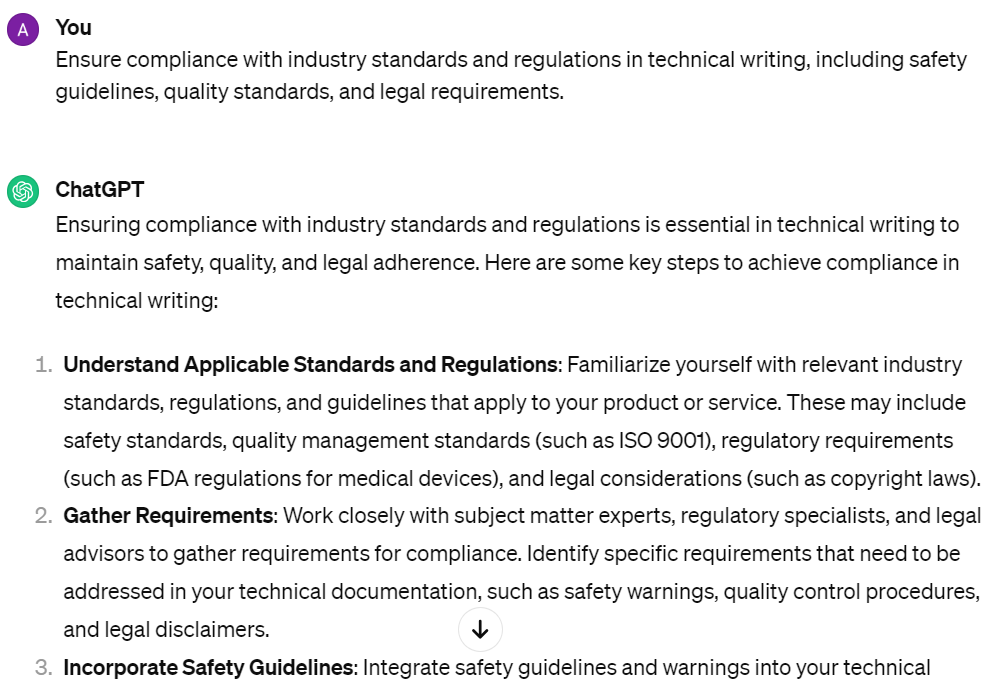
- Documenting Product Specifications and Features:
Effectively document product specifications and features, including performance metrics, design specifications, and user interface details.
- Conducting User Research for Technical Documentation:
Conduct user research to gather insights into user needs, preferences, and pain points, and incorporate findings into technical documentation.
- Translating Technical Jargon for Non-Technical Audiences:
Translate technical jargon into layman’s terms for non-technical audiences, including stakeholders, customers, and end-users, to facilitate understanding.
- Managing Version Control and Document Revisions:
Implement version control systems and document revision processes to track changes, manage updates, and ensure document integrity throughout the editing process.
- Developing Templates for Standardization:
Create templates for standardizing technical documentation formats, layouts, and styles, to maintain consistency and streamline content creation.
- Analyzing User Feedback and Iterating:
Collect user feedback on technical documentation, analyze responses, and iterate on content to address gaps, improve clarity, and enhance user satisfaction.
- Documenting Troubleshooting Procedures:
Document troubleshooting procedures and best practices for diagnosing and resolving technical issues, including error messages, troubleshooting steps, and resolution tips.
- Navigating Intellectual Property and Copyright Issues:
Navigate intellectual property and copyright issues in technical writing, including citing sources, obtaining permissions, and adhering to fair use guidelines.
- Implementing Plain Language Principles:
Apply plain language principles to technical writing, including using simple language, active voice, and everyday examples, to improve accessibility and comprehension.
- Creating Comprehensive Project Documentation:
Create comprehensive project documentation, including project plans, progress reports, and status updates, to keep stakeholders informed and aligned.
Get Membership for More Prompts
- Crafting User-Friendly Technical Manuals:
Develop strategies for writing technical manuals that are user-friendly, easy to navigate, and provide clear instructions for users.
- Adapting Writing Style for Online Documentation:
Explore techniques for adapting writing style for online documentation, including incorporating hyperlinks, multimedia elements, and interactive features.
- Incorporating Accessibility Features:
Learn how to incorporate accessibility features into technical documentation, including alt text for images, keyboard navigation, and screen reader compatibility.
- Creating API Documentation:
Master the art of creating API documentation that is comprehensive, well-organized, and easy to understand for developers integrating with your software.
- Documenting Software Testing Procedures:
Document software testing procedures, including test plans, test cases, and test results, to ensure thorough testing and quality assurance.

- Developing Release Notes and Change Logs:
Create release notes and change logs to communicate updates, enhancements, and bug fixes to users, developers, and other stakeholders.
- Translating Technical Documentation for Global Audiences:
Explore best practices for translating technical documentation into multiple languages to reach global audiences effectively.
- Implementing Document Management Systems:
Implement document management systems to organize, store, and retrieve technical documentation efficiently, ensuring version control and security.
- Writing Effective Error Messages:
Master the art of writing effective error messages that are clear, concise, and actionable, helping users troubleshoot issues effectively.
- Documenting Software Installation and Setup:
Document software installation and setup procedures, including system requirements, installation steps, and configuration options, to guide users through the process.
- Creating Workflow Diagrams and Process Maps:
Develop workflow diagrams and process maps to visually represent complex processes, systems, and workflows for easy comprehension.
- Documenting API Endpoints and Parameters:
Document API endpoints, parameters, and request/response formats to provide developers with clear guidance on using your API.
- Writing Technical Blog Posts and Articles:
Learn how to write technical blog posts and articles that engage readers, share insights, and establish thought leadership in your industry.
- Documenting Data Models and Database Schemas:
Document data models and database schemas to provide developers and database administrators with a clear understanding of data structures and relationships.
- Creating User Interface (UI) Guidelines:
Develop UI guidelines to standardize interface elements, layout principles, and interaction patterns for consistent user experiences across products.
- Writing Comprehensive User Guides:
Craft comprehensive user guides that cover all aspects of using a product or service, including features, settings, troubleshooting, and best practices.
- Documenting Security Policies and Procedures:
Document security policies and procedures to ensure compliance with industry regulations and protect sensitive data from unauthorized access.
- Incorporating Feedback Mechanisms:
Implement feedback mechanisms, such as surveys, user forums, and support tickets, to gather user input and improve technical documentation continuously.
- Creating Interactive Help Systems:
Develop interactive help systems, such as tooltips, contextual help, and guided tours, to provide users with on-demand assistance within applications.
- Documenting Mobile App Development Processes:
Document mobile app development processes, including design considerations, platform requirements, and testing methodologies, to guide app development teams.

- Crafting Technical Whitepapers:
Explore techniques for crafting technical whitepapers that communicate complex concepts, research findings, and thought leadership in your field.
- Optimizing Documentation for Search Engines:
Learn how to optimize technical documentation for search engines by incorporating relevant keywords, meta tags, and structured data.
- Creating Video Tutorials and Screencasts:
Develop video tutorials and screencasts to complement written documentation, providing visual demonstrations of software features and workflows.
- Documenting Software Configuration:
Document software configuration settings, options, and preferences to help users customize their experience and optimize performance.
- Writing Technical Case Studies:
Craft compelling technical case studies that highlight real-world examples of your product or service solving customer challenges.
- Documenting Software APIs and SDKs:
Document software APIs (Application Programming Interfaces) and SDKs (Software Development Kits) to empower developers to integrate with your platform.
- Developing Style Guides for Technical Writing:
Create style guides for technical writing to establish consistency in terminology, formatting, and writing conventions across documentation.
- Implementing Version Control for Documentation:
Implement version control systems (e.g., Git, SVN) for managing changes, revisions, and collaboration in technical documentation projects.
- Creating Illustrated Diagrams and Infographics:
Design illustrated diagrams and infographics to visually explain complex concepts, processes, and data in technical documentation.
- Documenting Data Migration Processes:
Document data migration processes, including data mapping, transformation rules, and validation procedures, to ensure smooth transitions between systems.
Sell Your Prompts Here
Are you good at writing prompts?
Put your expertise on display here and get paid!
- Writing API Documentation for Web Services:
Craft API documentation for web services, including RESTful APIs, SOAP APIs, and GraphQL APIs, to provide developers with clear usage instructions.
- Documenting Software Release Procedures:
Document software release procedures, including deployment strategies, rollback plans, and release notes, to ensure smooth product launches.
- Developing Documentation Templates and Samples:
Create documentation templates and samples to streamline the documentation process and maintain consistency across projects.
- Documenting Technical Specifications and Requirements:
Document technical specifications and requirements to outline project scope, functionality, and design considerations for development teams.
- Implementing Continuous Integration/Continuous Deployment (CI/CD) Pipelines:
Implement CI/CD pipelines for automating the build, test, and deployment processes, ensuring efficiency and reliability in software development.
- Writing Installation Guides for Software Products:
Craft installation guides for software products, including system requirements, installation steps, and troubleshooting tips, to help users get started.
- Documenting Data Analysis and Reporting Procedures:
Document data analysis and reporting procedures, including data sources, analysis techniques, and visualization methods, to support decision-making.
- Developing Documentation for Agile Software Development:
Document Agile software development processes, including user stories, sprint planning, and retrospectives, to foster collaboration and transparency.
- Creating Knowledge Base Articles and FAQs:
Develop knowledge base articles and FAQs (Frequently Asked Questions) to address common user queries and provide self-service support options.
- Documenting Cloud Infrastructure Configuration:
Document cloud infrastructure configuration, including virtual machines, networks, and storage configurations, to support cloud-based applications and services. 70
- Crafting Technical User Manuals:
Create comprehensive technical user manuals that provide detailed instructions for using software products or operating technical systems.
- Writing API Integration Guides:
Develop API integration guides to assist developers in seamlessly integrating third-party services or software components into their applications.
- Documenting Database Schema and Data Models:
Document database schema and data models to provide insights into the structure, relationships, and constraints of the underlying data.
- Creating Troubleshooting Guides:
Craft troubleshooting guides to help users diagnose and resolve common issues encountered while using software products or technical systems.
- Documenting Data Security Policies and Procedures:
Document data security policies and procedures to ensure compliance with regulations and safeguard sensitive information from unauthorized access.
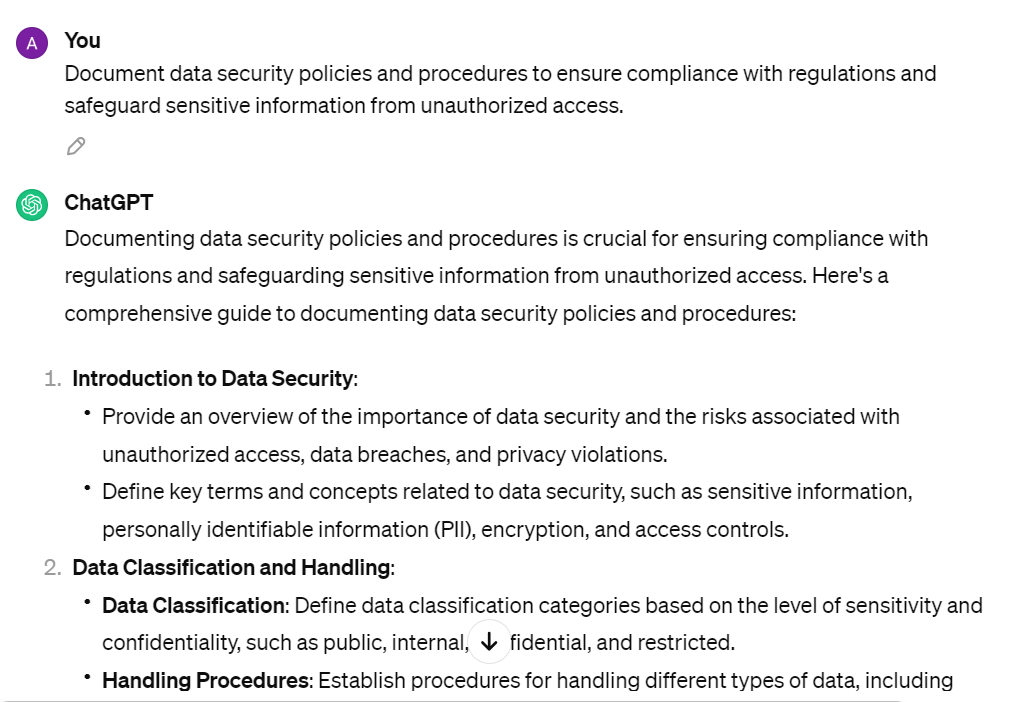
- Writing Technical Blog Posts:
Publish technical blog posts to share insights, tutorials, and best practices related to your industry, technology stack, or product features.
- Developing User Interface (UI) Style Guides:
Create UI style guides to establish consistent design patterns, typography, color schemes, and UI components across software applications.
- Documenting Software Testing Strategies:
Document software testing strategies, including test plans, test cases, and automated testing scripts, to ensure the quality and reliability of software products.
- Writing Release Notes and Change Logs:
Craft release notes and change logs to inform users about new features, enhancements, bug fixes, and performance improvements in software updates.
- Documenting Disaster Recovery Plans:
Document disaster recovery plans to outline procedures for restoring IT infrastructure, data, and operations in the event of a catastrophic failure.
- Creating Technical Presentations and Slide Decks:
Develop technical presentations and slide decks to communicate complex topics, project updates, or product demos to stakeholders or audiences.
- Documenting Continuous Integration/Continuous Deployment (CI/CD) Processes:
Document CI/CD processes, including build pipelines, automated testing, and deployment workflows, to streamline software delivery pipelines.
- Writing API Authentication and Authorization Guides:
Develop API authentication and authorization guides to help developers implement secure access control mechanisms for APIs.
- Documenting Machine Learning Models and Algorithms:
Document machine learning models and algorithms, including data preprocessing, feature engineering, and model evaluation techniques.
- Crafting Technical Product Roadmaps:
Create technical product roadmaps to outline the strategic direction, key milestones, and feature priorities for software development projects.
- Documenting Compliance Policies and Regulations:
Document compliance policies and regulations relevant to your industry or jurisdiction to ensure adherence to legal requirements.
- Writing Technical Proposals and Project Plans:
Craft technical proposals and project plans to outline project scope, deliverables, timelines, and resource requirements for client engagements.
- Developing User Acceptance Testing (UAT) Plans:
Develop UAT plans to define testing scenarios, acceptance criteria, and user feedback mechanisms for validating software functionality.
- Documenting System Architecture and Design:
Document system architecture and design decisions to provide insights into the high-level structure and components of software systems.
- Creating Technical Specifications for Hardware Devices:
Develop technical specifications for hardware devices, including performance metrics, connectivity options, and compatibility requirements.
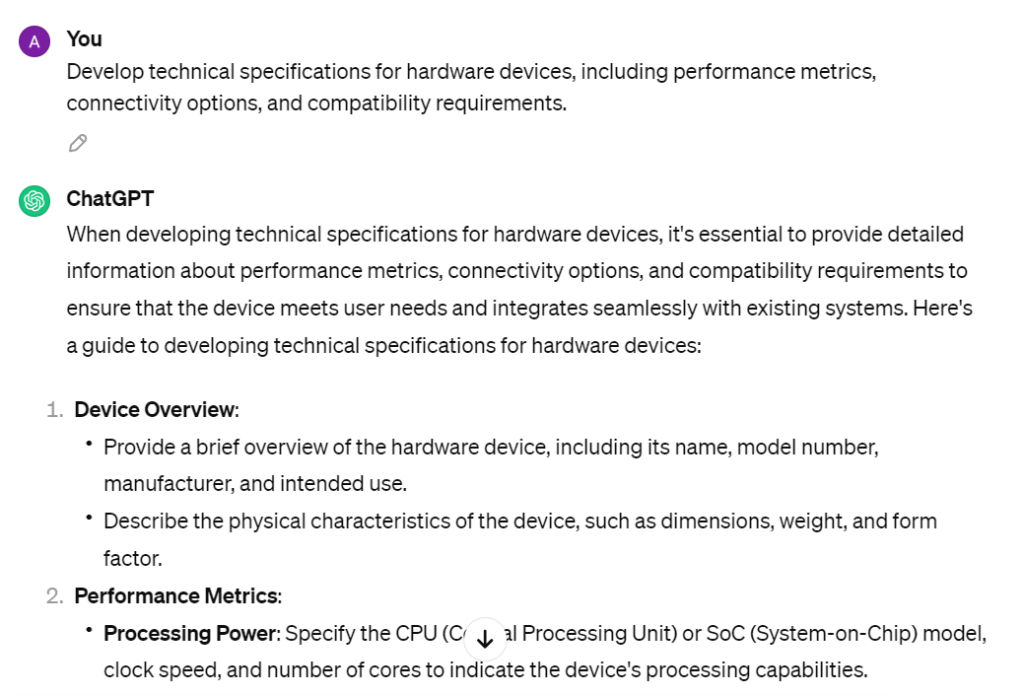
- Crafting Technical How-To Guides:
Create step-by-step technical how-to guides to help users accomplish specific tasks or solve common problems related to software or hardware.
- Documenting API Usage Examples:
Provide comprehensive examples of API usage, including code snippets and sample requests, to assist developers in implementing API functionalities.
- Writing Technical Case Studies:
Craft technical case studies to showcase successful implementations of your products or services, highlighting challenges, solutions, and outcomes.
- Developing Software Architecture Diagrams:
Create software architecture diagrams, such as component diagrams and sequence diagrams, to visually represent the structure and interactions of software components.
- Documenting Software Configuration Management Processes:
Document software configuration management processes, including version control, branching strategies, and code review workflows, to ensure code quality and collaboration.
- Creating Technical Whitepapers:
Develop technical whitepapers to explore industry trends, research findings, or emerging technologies, providing in-depth analysis and insights to readers.
- Writing Technical User Stories:
Craft technical user stories to capture requirements from an end-user perspective, detailing specific features, functionalities, and acceptance criteria.
- Documenting Data Migration Strategies:
Document data migration strategies and best practices for transferring data between systems or platforms while minimizing disruption and ensuring data integrity.
- Creating Technical Training Materials:
Develop training materials, including manuals, videos, and interactive tutorials, to educate users or employees on software usage and best practices.
- Documenting API Rate Limiting Policies:
Document API rate limiting policies to manage API usage and prevent abuse or excessive consumption of resources by restricting request rates.

Final Thoughts
In conclusion, ChatGPT Prompts for Technical Writing emerge as an invaluable asset for busy professionals navigating the AI landscape. With a user-friendly solution, these pre-built prompts save time and energy, addressing the writing challenges faced in crafting optimized content. Empower your writing journey, elevate your content creation, and embrace the convenience it brings to your professional endeavors. Happy writing!

